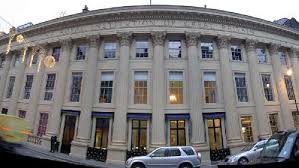Why you should go: Science education that is both scientific and educational. Why you want to go: Portable labs.
 A new strain of science education is growing in the basement of the Royal Institution of Great Britain. The Young Science Centre, up and running this September, is designed to make science fun (which is not unusual for this form of outreach) but also to make it intellectually stimulating (which is unusual).
A new strain of science education is growing in the basement of the Royal Institution of Great Britain. The Young Science Centre, up and running this September, is designed to make science fun (which is not unusual for this form of outreach) but also to make it intellectually stimulating (which is unusual). To get to the Centre, make your way through the black Jaguars on Albemarle Street, Westminster, enter the Royal Institution, go past the plush lecture halls and glass cases, and drop down into the lower floors. Already there are a few eye-catching things on display. There are lots of bright lights in primary colours, and some big projection films featuring old labs. One curious thing is an empty white room. This is where working scientists come down to....work as scientists. Not a bad way to show kids how science works.
But the most interesting stuff will be behind a blue door marked: "Young Scientist Centre." At the moment the YSC looks very much like a museum basement in the middle of renovations. The main room is the size of a tennis courts and houses a lot of boxes, old books, and empty frames.
The room looks quite different in the mind of David Porter, who is managing the new project. In the blueprints it is cross between a lab and a moon-base. The furniture is a series of white circular benches, neatly tesselated and arranged in rings and lines. They have taps and power sockets like ordinary lab benches. But these benches are much more interesting. You can push each one around the floor to make new rings and clusters. You can adjust their heights, from waist level upwards. And nearby there is a smaller room filled with tiered, rounded sofas, the interior decorator's version of a bouncy castle.
This unusual decor is the backdrop for a series of interactive projects that Porter hopes to roll out once the Centre opens. The manoeverable and height-adjustable benches mean that students of all ages (and heights) can use them for many different kinds of hands-on projects. The bouncy break-out room is for planning and discussing the results of tests and experiments carried out in the laboratory. And Porter expects there will be more to discuss than playdough, dinosaur posters, and plastic models of the solar system, because the educational tools in the lab will be the tools of real scientists, from pipettes to microscopes to Geiger counters.
Porter also wants to equip the lab, and the students, with a scientific attitude -- something that they may not get at school. After 30 years working as a science teacher, he thinks he has a good idea of what works and what does not in science education. And he hopes that the combination of sleek instruments, funky decor, hands-on discovery, and inspired teaching, will illuminate science - real science - in a way that routine science classes cannot. The Centre will be a ray of light for teachers as well as students, if Porter has his way. Let's hope he does.
No comments:
Post a Comment